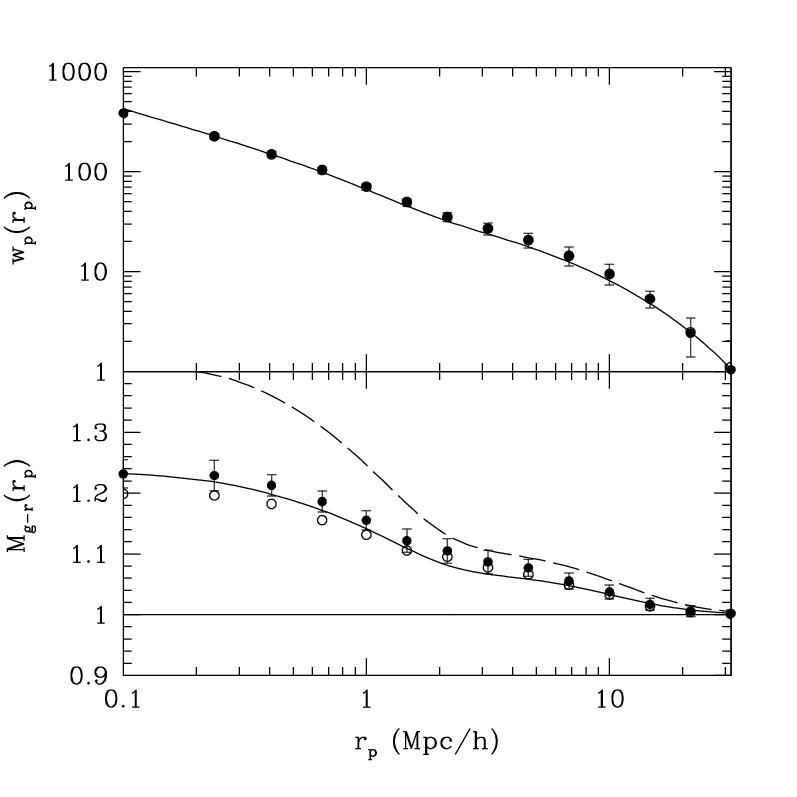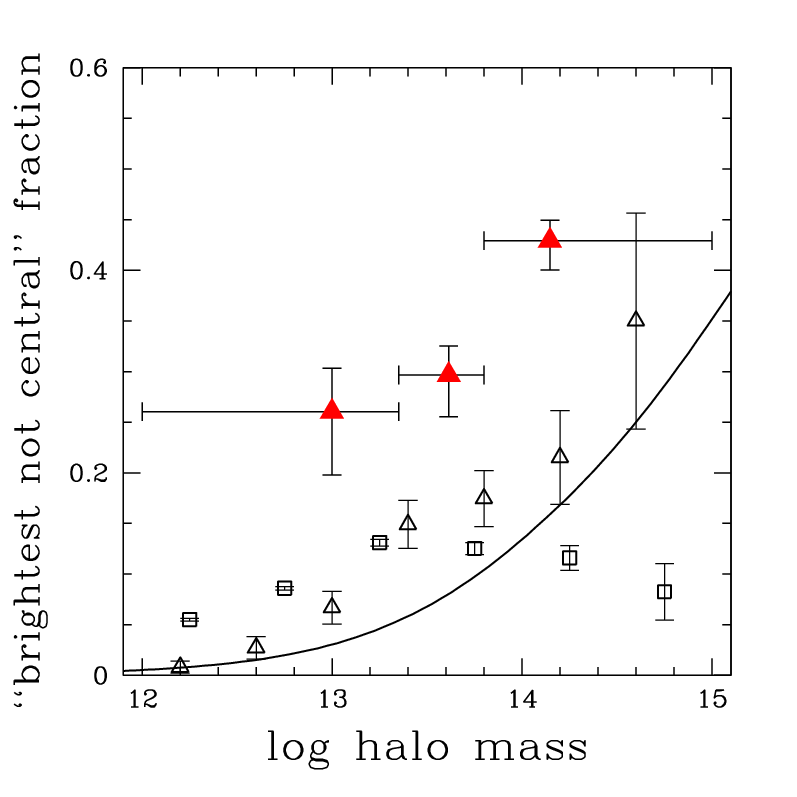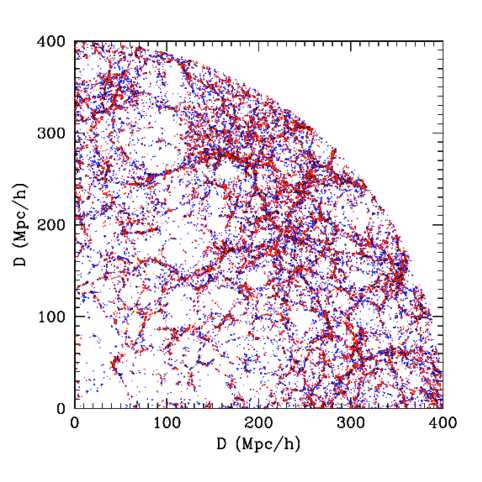In Skibba & Sheth (2009), I developed the first self-consistent model of the (optical) color dependence of galaxy clustering and color-luminosity distribution. (Excellent competing models have appeared in 2013.) In order to reproduce the observed mark clustering measurements (Fig. 6 of this paper is shown below), I argued that satellite galaxies tend to follow a particular path on the CMD, such that brighter satellites are more likely to be on the red sequence and are redder than centrals at a given luminosity.

In unpublished work (and "in preparation"), I'm including stellar masses, gas-phase metallicities, and morphologies (using Galaxy Zoo constraints from Skibba et al. 2009). I also eventually plan to extend to the model to bluer and redder magnitudes, ultimately yielding a halo model of galaxy spectral energy distributions, which can be used in conjunction with SPS models.
analysis of central and satellite color distributions in mocks and group catalogs in Skibba (2009). satellite color distributions include a significant blue component, and their color distributions are only weakly dependent on group richness. this implies a star formation quenching mechanism that occurs in all halo masses (rather than being cluster-specific), such as "strangulation/starvation".
analysis of dynamics and spatial distributions of "brightest halo galaxies" in Skibba et al. (2011). we analyze three effects: central galaxy velocity bias, the substructure fraction, and the fraction of systems in which the brightest (or most massive) galaxy isn't the central one. all three are nonzero, but the latter is the dominant effect. the following figure shows how this fraction increases with halo mass and is larger than the fraction in SAMs and our fiducial CLF model.


and now I'm including effects of dynamical unrelaxedness and anisotropies... effects described in Skibba et al. (2011) and Skibba & Maccio' (2011). mock cone is HERE, constructed with Bolshoi simulation haloes and the Rockstar halo finder. descriptions will be added here, and details are in Old et al. (2013, submitted).